Key takeaways:
- Ethical storytelling prioritizes transparency, consent, and respect for the subjects’ humanity, ensuring that narratives honor their experiences.
- Engaging in active listening and providing context enhances the depth and authenticity of the stories shared.
- Challenges include balancing transparency with sensitivity and overcoming implicit biases to represent diverse perspectives accurately.

Understanding ethical storytelling
Ethical storytelling is rooted in transparency and respect for the subjects involved. I recall a time when I worked with a patient who shared their surgery experience with me. They were vulnerable, and I realized that sharing their story wasn’t just about relaying facts; it was about honoring their journey and emotions. How can we ensure we convey these stories authentically while respecting the individuals behind them?
When I think about the power of narrative in surgical research, I’m often reminded of my own experiences in the field. Each case has unique human elements that data alone can’t convey. I ask myself, are we doing justice to these individuals by simply presenting statistics, or are we missing out on the depth required to connect with our audience? Engaging emotion and personal insights can bridge that gap.
Ultimately, embracing ethical storytelling means prioritizing the voices of those we write about. I strive to make decisions that align with their dignity and understand that our narratives can shape perceptions. If we’re not mindful of how we present these stories, can we truly claim to be advocates for our patients? The answers lie in being thoughtful, empathetic, and courageous in our storytelling approach.
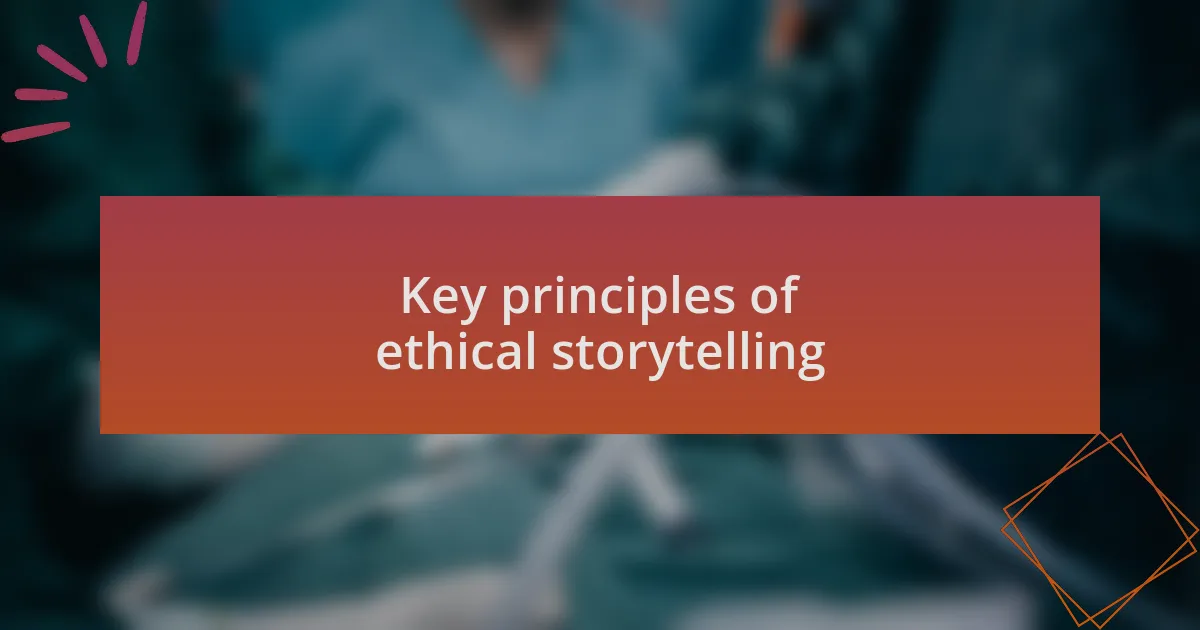
Key principles of ethical storytelling
One fundamental principle of ethical storytelling is the importance of consent. I remember interviewing a surgical patient whose journey was particularly challenging. Before sharing their story, I ensured they fully understood how their narrative would be portrayed. It’s a crucial moment—doing this not only empowers the subject but fosters a genuine relationship built on trust. How often do we consider this aspect before sharing someone’s experience?
Another key element is portraying stories with depth and nuance. While statistics can provide context, they often strip away the multifaceted nature of a person’s journey. I once documented a case where the success of a procedure was accompanied by significant emotional challenges. This complexity made the narrative richer and more relatable. Shouldn’t we strive to reflect the full spectrum of these experiences in our accounts?
Lastly, honoring the humanity of our subjects is essential. I vividly recall the tears of joy from a patient who had successfully navigated surgery and rehabilitation. It was a profound reminder that behind every statistic, there’s a person with hopes and dreams. Are we truly honoring these individuals when we tell their stories? By focusing on their humanity, we can create narratives that resonate deeply, inspiring empathy and understanding among our audiences.
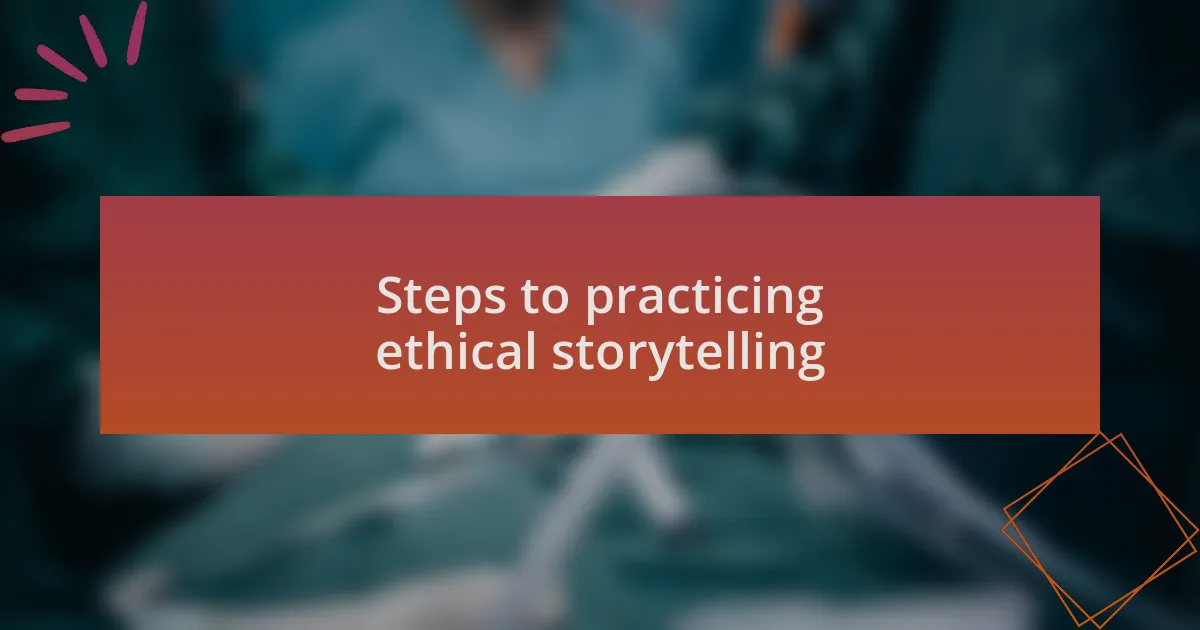
Steps to practicing ethical storytelling
One effective step in practicing ethical storytelling is to engage in active listening. I remember a time during a post-operative follow-up when a patient shared their fears about recovery. Taking the time to truly listen without interruption not only revealed layers of their experience but also helped build a sense of safety. How often do we pause to really hear the emotions hidden in someone’s words?
Another important aspect is to provide context to the stories we share. In one case, I was tasked with writing about a surgical technique that was perceived as groundbreaking. Instead of solely focusing on the procedure itself, I included the historical struggles the medical team faced while developing this method. This broader perspective didn’t just enhance the narrative; it highlighted the resilience behind the innovation. Isn’t it fascinating how context can transform a simple story into a powerful lesson in perseverance?
Additionally, I’ve learned that transparency about potential biases is crucial. When I wrote about a patient advocacy group, I disclosed my prior involvement with them to maintain openness with the audience. Admitting personal connections or biases fosters credibility and helps readers navigate the story with a critical eye. When we illuminate our own perspectives, do we invite others to reflect critically on their own biases?
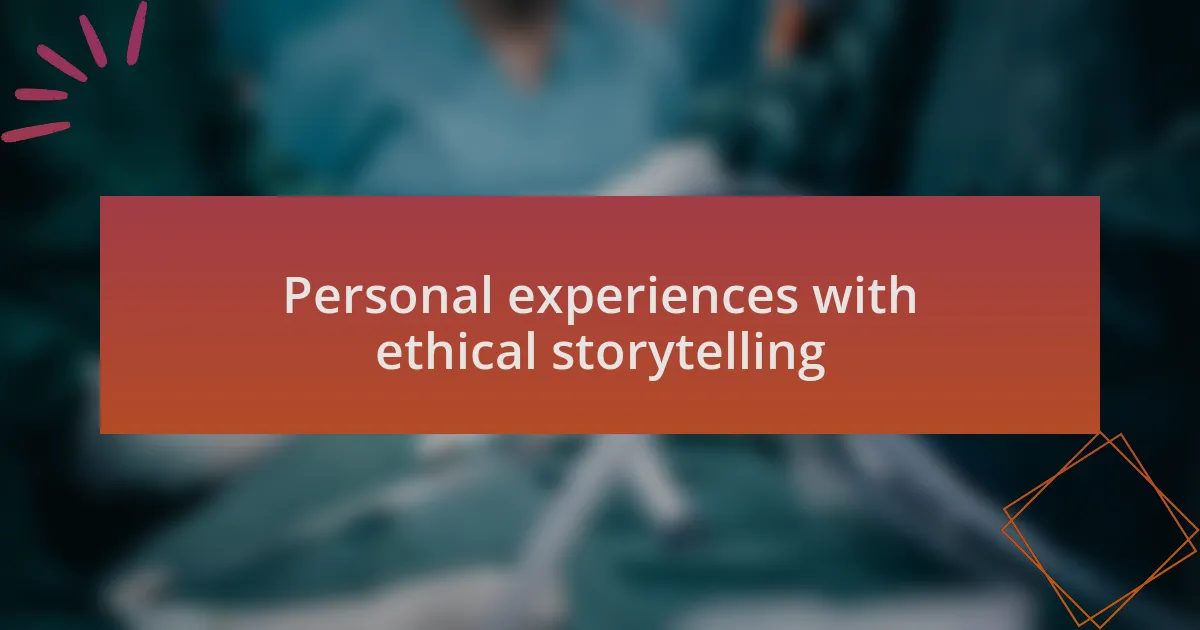
Personal experiences with ethical storytelling
Reflecting on my own journey, I vividly recall a time when I was writing about a complex surgical case involving a young patient. As I unraveled the narrative, I felt a profound responsibility to portray not only the medical facts but also the emotional weight carried by the family. Sharing their joys and fears meant stepping into their shoes, allowing me to tell a story that was not just clinical but deeply human. Have you ever felt that level of responsibility when conveying someone else’s story?
I also encountered a moment that challenged my views on representation. While writing about a diverse group of patients participating in a clinical trial, I was struck by how easy it could be to inadvertently marginalize voices. This pushed me to actively seek out stories from those who were often overlooked. It was enlightening to realize how inclusivity and representation could reshape the narrative, transforming it into a rich tapestry of lived experiences. Doesn’t it make you wonder how many stories remain untold simply because we didn’t think to ask?
Moreover, I’ve discovered the transformative power of feedback in ethical storytelling. I once shared a draft with a colleague who pointed out areas where my biases might have unintentionally seeped into the narrative. Their insights were invaluable, prompting me to re-examine the story from different angles. This collaborative spirit not only refined my writing but also deepened my commitment to authenticity. When was the last time you welcomed constructive criticism to enrich your storytelling approach?
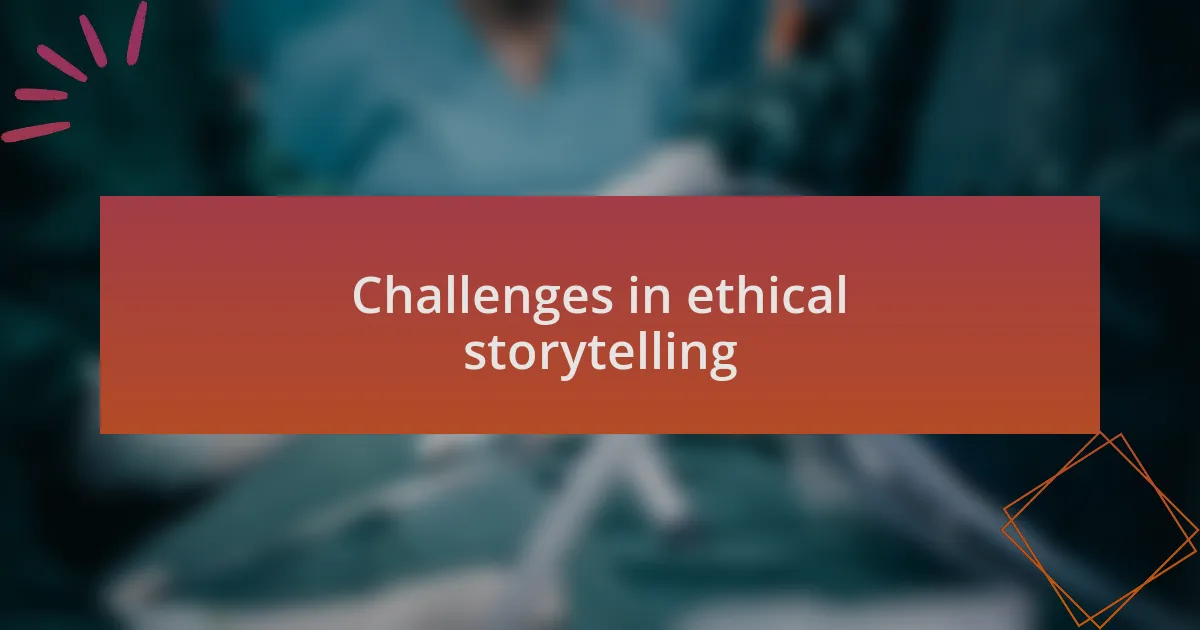
Challenges in ethical storytelling
One of the biggest challenges in ethical storytelling is balancing transparency with sensitivity. I remember crafting a piece about a surgical procedure that had devastating outcomes for a patient. While I felt it was crucial to share the medical realities, I struggled with how to frame the narrative without sensationalizing their experience. Have you ever grappled with the line between necessary honesty and protecting someone’s dignity? This tension can make storytelling feel like walking on a tightrope.
Another significant hurdle is the potential for implicit bias to influence narratives. I once wrote about a groundbreaking study involving patients from various backgrounds, but I realized too late that my language unintentionally leaned towards the more familiar demographics. This oversight highlighted how easily our biases can creep into our storytelling. When was the last time you examined your own biases when telling a story? Recognizing this allowed me to actively seek diverse perspectives, ensuring that every voice was authentically represented.
Lastly, maintaining consistency in ethical storytelling can be daunting, especially when timelines and details shift. I experienced this firsthand while documenting the evolving responses of a clinical research team to a public health crisis. With each update, I faced the challenge of accurately representing the ongoing situation without losing the initial emotional impact of the story. How do you keep your narrative threads aligned while honoring the complexity of real life? It’s an ongoing learning process that demands vigilance and a willingness to adapt.
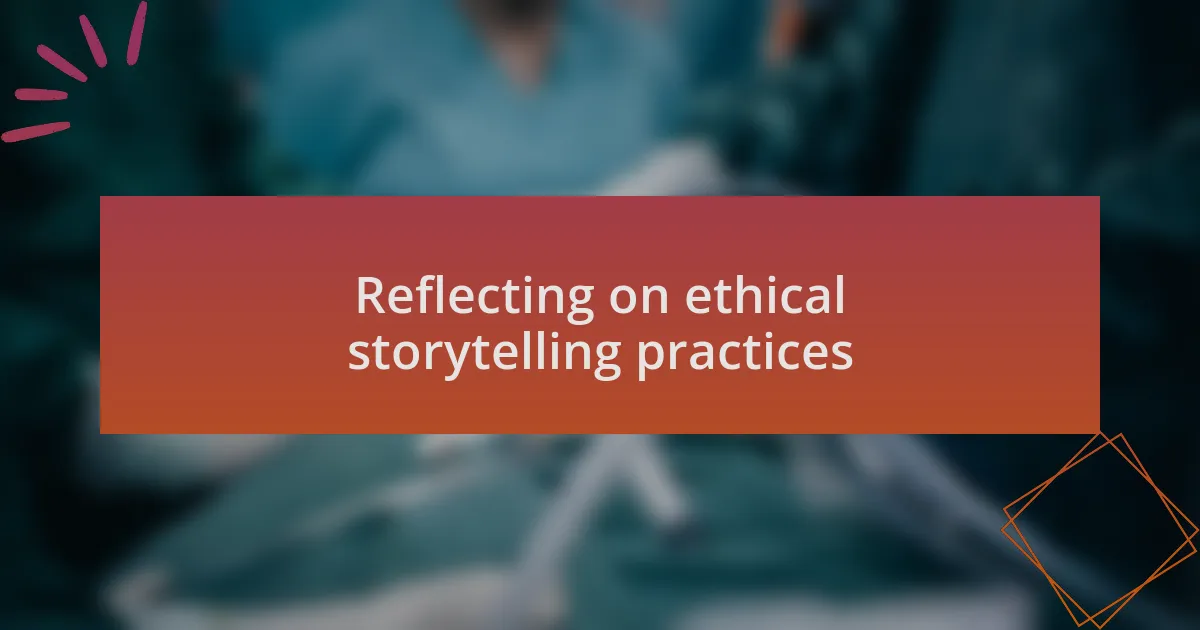
Reflecting on ethical storytelling practices
Reflecting on the practice of ethical storytelling often leads me to consider how to foster trust through my narratives. I once shared the story of a surgical breakthrough, but it hit me that the patient’s journey was just as important as the medical achievement. By focusing on their emotions and struggles rather than simply glorifying the procedure, I felt I was honoring their experience. Have you ever paused to think about the impact your choice of narrative can have on readers’ perceptions of patients?
Another aspect I ponder is the importance of context in ethical storytelling. While writing about a complex surgery, I included details about the patient’s background, which brought additional layers to the story. Yet, I learned that providing context requires a delicate balance; too much information can distract, while too little can mislead. Have you found this balance in your own storytelling? I now strive to weave in context wisely, ensuring that it enhances rather than overshadows the core message.
Lastly, I frequently reflect on the emotional undertones of my stories. I once wrote about a patient whose family faced tough decisions after a procedure. Their journey was fraught with anxiety and hope, and capturing that emotional complexity was vital. How do you convey the weight of such experiences in your writing? By embracing the authentic emotions involved, I found that my storytelling resonated more deeply, leaving readers not just informed, but moved.